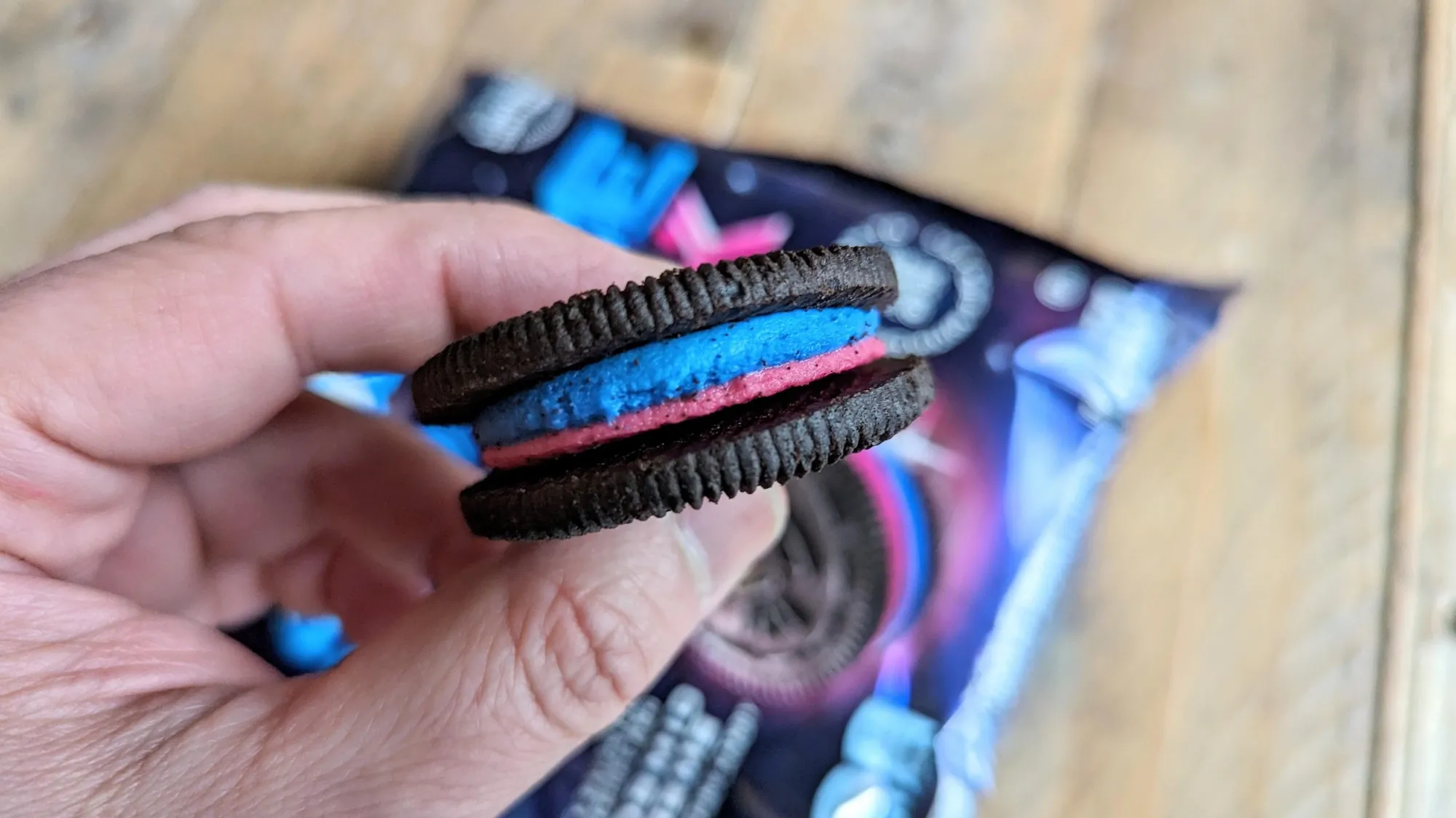OREOs are a classic cookie. The simplicity of the confection is why it’s so, so good. Two, chocolate wafers stuck together with a nice creme. “Milk’s favourite cookie”, hasn’t changed that much since its introduction in 1912.
At least the core sandwich cookie hasn’t changed much. Friends debate whether the “Double Stuf”—introduced in 1974, with twice the filling and only 1 f for some reason—is better than the classic. Otherwise, this is a product that was been stable both in presentation and it’s viability as a business.
Off the Rails
Stable isn’t a goal for many business. OREO and its parent company, Mondelēz International, are no exception. In the early 2000’s OREO started to offer more varietals and different OREO-ish cookies.
Oreo CEO: Stop Making New Oreos, by Dropout.tv
The video above—from the amazing Dropout.tv (previously College Humor)—starring the iconic Brennan Lee Mulligan, is amazing parody of this trend. A trend that has quickly gotten out of hand.
In the video, Brennan plays Carl Box, a fictitious CEO for OREO. Carl repeatedly asked “why” as his team introduces new and increasingly more absurd OREO varietals. A question that actual CEO Dirk Van De Put and his team probably should be asking more frequently.
Why should they question product direction more?
Why…Just…Why?
Behold, the Space Dunk OREO.

Officially, the “OREO Space Dunk Chocolate Sandwich Cookies, Limited Edition”, this abomination of a confection features “two layers of cosmic flavored creme with popping candy” between the classic wafer cookies. Legally, the creme is “marshmallow flavored”.
Having tried it. I can assure you that it is not.
Unless “marshmallow” is missing a hyphen. The flavour is very reminiscent of what a marsh smells like. I cannot recall seeing a mallow plant in person, but despite the lovely appearance, based on my cookie experience I assume they are toxic. That is the only explanation of the “marsh-mallow” flavour description that makes any sense.
Note: The mallow plant is not toxic and is actually quite lovely. So there goes that theory…
This cookie is not good. Is it an OREO? Only because it’s a cylinder, technically edible, and made by the same company.
What it is, is marketing and the desire for growth run rampant.
Growth At Any Cost
OREO has released almost 60 different special or limited edition cookies. I was thinking about this explosion of varietals, not only because of the horror of the Space Dunk, but also because of how closely it mirrors the world of technology.
I’ve lost count of programs that I really enjoy using to solve very specific problems that grow unwieldy as more and more features are added. This isn’t a “back in my day” opinion. At least I hope it isn’t. I’m definitely at the age where that’s a valid fear of mine.
This is a consistent pattern that is fed by the best of intentions from engineering teams and misaligned intentions from the push of business.
More Is Rarely Better
Adding more and more features inevitably obscures focus. User experience will suffer as it takes more and more steps to accomplish that key task that drew you in during those early days. While the checklist of features grows and the appearance of “better” comes to light, actual productivity and enjoyment diminishes.
Jensen Harris on the Microsoft Office User Experience Team discusses this challenge way back in 2006 when they introduced the “ribbon” to Microsoft Office. This near complete interface overhaul was aimed at making sense of the thousands of features the software had gained over time.
In contrast, Google Docs launched with minimal—if any!—features and found rapid adoptions due to its simplicity. There’s a direct line from that launch through to a number of simplified writing tools on modern platforms—like Bear and IA Writer. This category of software is trying find the elusive balance of “just enough” feature.
As Simple as Possible, And No Simpler
Software is infinitely flexible. With just a rich set of tools, there’s a near insurmountable compulsion to continue to add to anything you create.
It takes a specific mindset to push back against this. Developers and technologists need to enjoy the simple and direct. There needs to be an appreciation of the craft required to create an elegant solution that solves a problem well and does it efficiently enough that adding to it diminishes either the elegance or the efficiency.
Until that happens, we’ll keep getting crazier OREOs that we just don't need.




